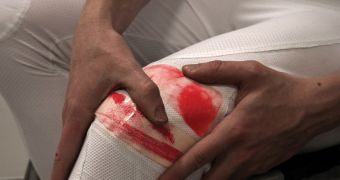Pain may be an unpleasant condition to be in, even horrible depending on how badly you get hurt, but for all its drawbacks, it at least lets you know when something is wrong. Paraplegics don't have that benefit, so a team of engineering students at Imperial College London set about creating a way around it.
Paraplegics don't have feelings in their lower extremities, some lacking it everywhere from the waist down depending on the injury or illness that confined them to a wheelchair.
These days, however, there are ways to regain some of the lost motor functions, like prosthetics, exoskeletons, electric impulse therapy, etc.
None of those really restore feeling in the legs, however, which means that those affected can incur injuries, from minor bruises to broken bones, and not even notice.
Needless to say, this can lead to even more severe complications than just being confined to a wheelchair. To reduce the odds of injuries going unnoticed, the students at imperial College London have invented the “bruise trousers.”
Engineering students Lucy Jung, Elena Dieckmann, Dan Garrett and Ming Kong are participating in the Rio Tinto Sports Innovation project, which fosters development of Paralympic sports equipment.
Made of breathable white Lycra material, the “bruise trousers” are designed with pockets that contain pressure-reactive film capable of detecting hard impacts.
If the wearer receives a hard impact, he film will release a magenta dye contained in microcapsules. The color intensity will depend on the strength of the impact. The pockets are located over the pelvis, leg bones and, in the case of overalls, the thorax as well.
The students tested the efficacy of their invention, down to the visibility of the dye through the Lycra, by wrapping the trouser material around animal bones and hitting them with a drop tower repeatedly.
The bruise trousers will allow sportspeople to know whether they should go and seek help from a medic or nurse during or after a Paralympic game, like sit ski, wheelchair basketball and motor racing. The next step will be creating an entire bruise suit, then turning the technology into a full line of sports equipment.
The team of students behind this invention were inspired by paralympian skier Talan Skeels-Piggins, who gave a talk during a visit at the College and fleetingly remarked about not being able to feel his injuries after competing in high impact sporting events. Further inquiries on the part of the students revealed that it's a widespread problem, hence their project.

 14 DAY TRIAL //
14 DAY TRIAL //